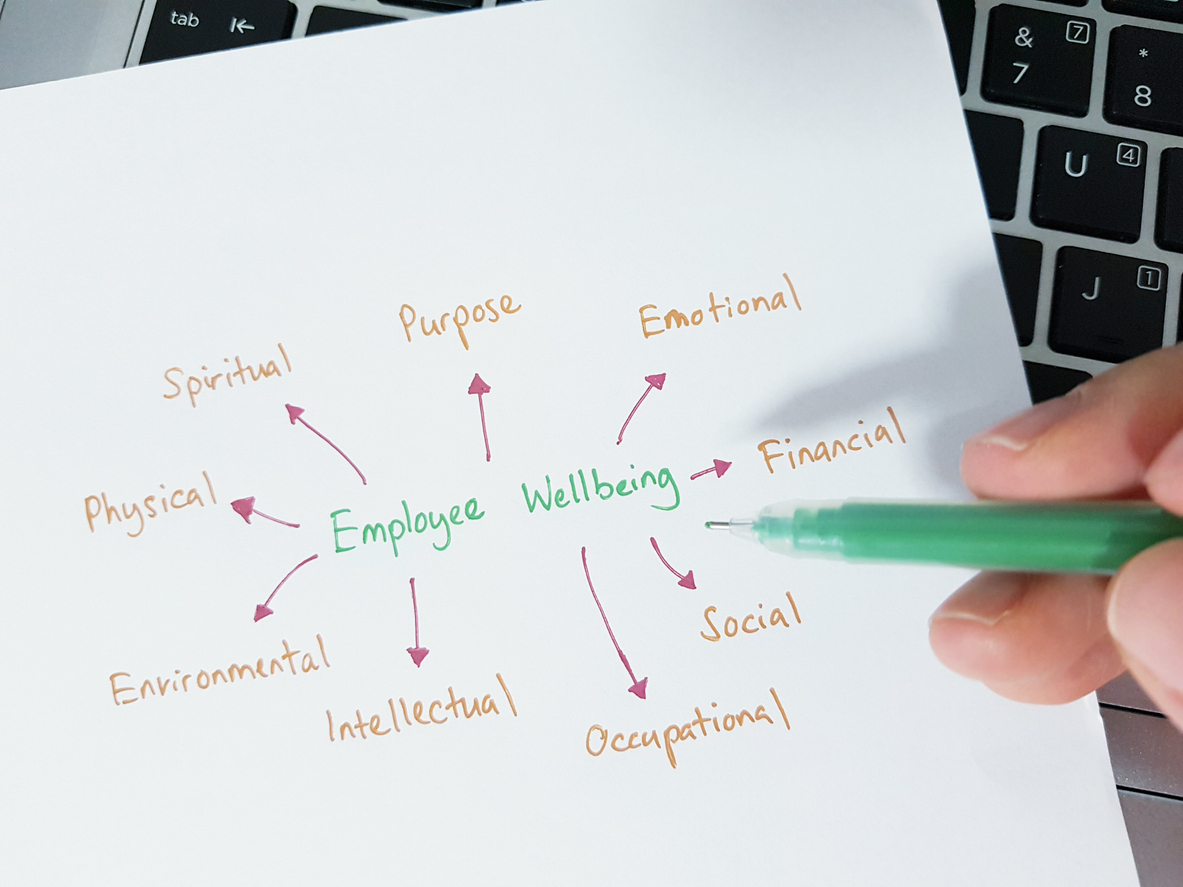12th Annual Health and Well-Being Survey
Business Group on Health is the preeminent advocate for large employers in health care policy. Their team of experts are an authority in the health and benefits realm and they are constantly providing innovative solutions and insights for health and benefits issues. One of their major contributions each year is the Employer Sponsored Health and Well-Being Survey.
2021 was the 12th year that the Business Group on Health and Fidelity Investments have partnered to survey large employers around their well-being programs and strategies. One-hundred sixty-six employers responded to this year’s survey, representing a large range of industries. The survey focused on areas such as defining well-being, types of well-being programs being offered, staffing, budget and incentives for well-being, well-being communications strategy, future of health improvement investment and global well-being strategy for multinationals.
Listed below are insights from the survey that can help you as employers better understand how well-being offerings are changing and how to plan for both 2022 and the years to follow.
Survey Insights
1.) In 2021, 90% of employers credited well-being strategy as playing a role in overall business strategy, with 28% saying well-being takes a fundamental place in strategy. These numbers are continuing to rise each year as employers further recognize the impact of employee well-being on their business objectives.
2.) The motivation behind why employers offer well-being programs is changing. Historically, employers’ main goal was reducing costs from health care dollars, with 86% of employers ranking it as a top motivator in 2020. However, more employers are now focusing employee engagement. 77% of employers listed improving employee engagement as the driving force behind their well-being programs in 2021 vs 59% in 2019.
3.) In 2021, 8 in 10 employers said that equity, diversity and inclusion (EDI) have influenced their well-being strategy. In addition, 81% of employers invite internal EDI leaders to share their thoughts on well-being initiatives and 78% are seeking input directly from their employee base through surveys, employee resource groups (ERGs) and/or focus groups.
4.) When it comes to incentives, quite a few intriguing trends have emerged. First, employees are taking advantage of the incentives being offered more now than in 2019, which is likely caused by the financial stress caused by the pandemic. Second, incentives are being used for more than just physical health programs. Last year, only 15% of well-being incentives were dedicated to mental health and financial well-being activities; in 2021, this number rose to 21%.
5.) Employers responded to the mental and emotional health crisis brought on by the COVID-19 pandemic by expanding their offerings to address even more potential challenges. This survey found that all offerings are expected to continue to grow, including teletherapy/telemental health, mindfulness programs, stress management programs, resiliency programs, happiness programs, as well as sleep improvement programs, digital CBT (Cognitive behavioral therapy) programs, mental health champions/allies and pediatric-focused mental health support.
6.) All area of financial wellness programs will see growth. In fact, financial wellness programs are expanding beyond financial management tools, financial seminars, and one on-one financial coaching to now also include student loan counseling and even student loan repayment programs. In addition, we can expect to see more programs in the coming years that will focus on efforts to support lower-income employees.
Looking Forward
The last two years since the outbreak of the COVID-19 pandemic have caused many shifts and changes for employee well-being programs. Most programs had to make a rapid shift to virtual services and then expand to assist employees with new mental, emotional and financial challenges. With three-fourths of the employers surveyed plan on expanding their offerings even more in the next 3 to 5 years, it is clear that wellness programs are here to stay. Looking forward, well-being initiatives will continue to evolve and have a measurable impact on the health of employees.
For even more insights and detailed findings, check out the full 12th Annual Employer-Sponsored Health & Well-being Survey!








